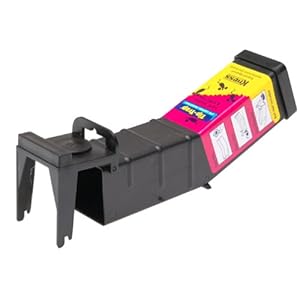How to Write an Introduction - 5 Steps to Help You
Whether you are writing an essay for school, an narrative for the web, or a expert report, you must start with a good introduction. Why? Think about your own experience as a reader. If the first two to three sentences do not catch your attention, will you continue to read on? It's unlikely! Without a strong introduction, you will turn the page to the next article, or surf to the next site, or pick up the next proposal. Therefore, if you want your writing to do its job, you must start with a strong introduction. Here are five steps to help you do it.
How to Write an Introduction - 5 Steps to Help You
How to Write an Introduction - 5 Steps to Help You
How to Write an Introduction - 5 Steps to Help You
How to Write an Introduction - 5 Steps to Help You
1. Don't neglect the pre-writing process.
Pre-writing should take up most of your time as a writer, unless you have a great deal of experience in what you're writing about (and even then, your writing will be much stronger if you go through the pre-writing process). Pre-writing begins with research, research, research. You want to research more than you think you need to, and then after you think you've right on researched enough, research just a diminutive bit more. After researching comes the steps of forming a normal thesis, then a normal outline, then your first draft. There's much more to be said pre-writing, but for now, stick to those four steps: research, thesis, outline, draft. As you will see below, you cannot write an introduction without a thesis, and you cannot write an introduction without knowing where your narrative will go after your thesis. My advice? Write your introduction dead last!
2. Your thesis is the star of the show.
If your narrative were a debutante ball, all the effort that goes into arranging the party would be the pre-writing process; the environment, music, attendees, fruit punch, and so forth would be the body of your report; but the debutante herself would be your thesis. She may be only one someone amongst hundreds of other guests, but all the other guests are there for her -- she's the star of the show. The job of your preliminary paragraph or preliminary section is to introduce your thesis. Therefore, your whole introduction should build up to your thesis.
No matter what your thesis is, your introduction needs to achieve safe bet tasks, which are now listed below.
3. gift a problem, then solve it with your thesis.
For example, if you are writing about the new and improved mouse trap you have invented and want to sell, your thesis might be, "My mousetrap is good than all the existing mousetraps on the shop today." Your introduction, then, needs to begin by stating that there is a question with existing mousetraps.
So your first sentence might be,
"No one likes to have mice in their house, but unfortunately most mousetraps do not effectively remove mice" (the problem).
If the first sentence or paragraph in your introduction presents a problem, the next few sentences should begin to guide the reader into solving the problem. continuing with the mousetrap example, your next few sentences might state,
"In a traditional mousetrap, mice frequently eat the cheese without getting caught." (This is what's wrong with existing traps.) "My mousetrap contains cheese inside a trapdoor, which the mouse automatically triggers upon entering the trap. The mouse is then caught inside, along with the cheese." (Wow, your mousetrap sounds like an improvement!) "Therefore, my mousetrap is good than all the existing mousetraps on the shop today."
5. Once you've stated your thesis, tell your reader what else they will learn when they read your report.
Do you remember learning the five paragraph essay in high school? There were some parts of this cookie-cutter writing format that were horrendous, and ought never to have been taught to poor, unsuspecting high school students. However, there are parts of this writing method that are useful, and which I still use today. One of those is: tell your reader what you are going to say, say it, and tell them you said it. Now, in some writing philosophies, you tell your reader what your narrative is about before you get to the thesis, and your thesis is the very last sentence of your introduction. Personally I do not like this method. I prefer to state my thesis, and then give my reader a infer to read the rest of the report. Using the mousetrap example again, after stating the thesis, you could go on to tell the reader how you will prove that your mousetrap is the best in a second preliminary paragraph:
"First, I will survey the three top-selling mousetraps on the shop and their significant flaws. Then, I will illustrate the research and amelioration process for my mousetrap. Finally, I will gift two case studies of businesses that have successfully implemented my mousetraps."
I think readers appreciate what they are getting into -- don't you?
A well-written introduction will propel your reader into the rest of your narrative or report. No matter how prominent the information in your narrative is, it won't matter very much if no one reads it! So do your writing a favor: ensue the five steps above and write a clear, compelling introduction for every article, essay, and narrative you write.
How to Write an Introduction - 5 Steps to Help YouTags : Weber GasGrill Outdoor Arch Pergola Citrus Juice Extractor

No comments:
Post a Comment